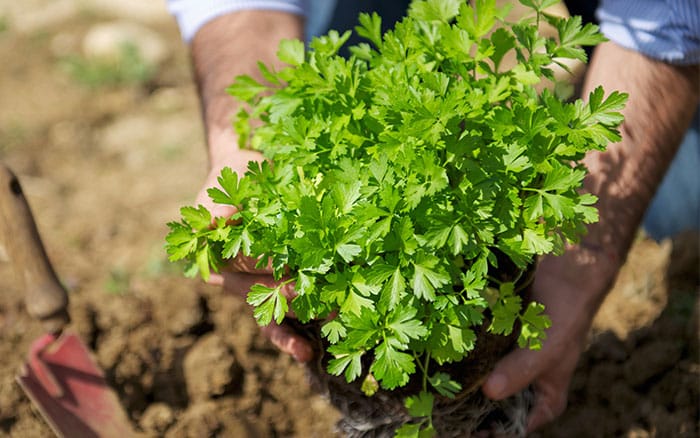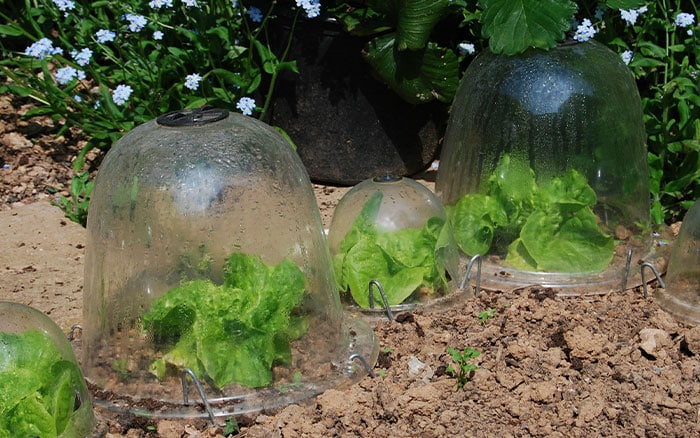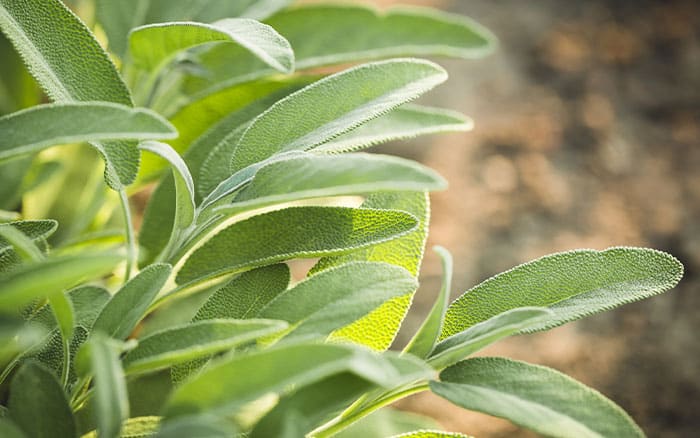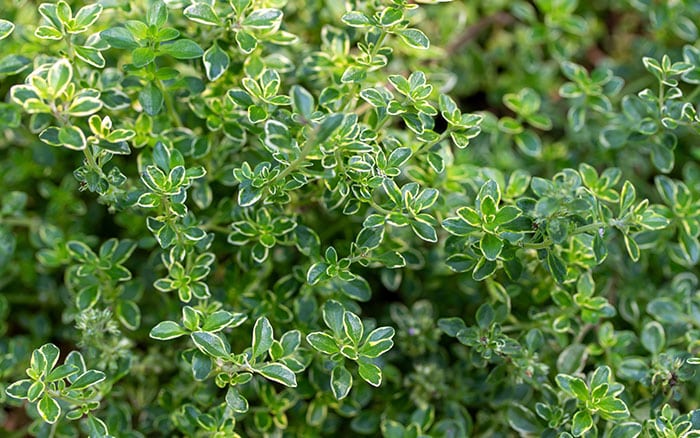Herbs that grow in winter
Growing winter herbs is a great way to continue producing delicious flavour despite the cooler conditions. Even though many plants including herbs go dormant in autumn and winter, there is still plenty to grow. Find out the best winter herbs to grow this year.
Winter herbs to grow outside
Which herbs can grow outside in winter?
Herbs are generally quite tender, however, there are a few hardy enough to survive outside in winter. Mint is a great one to consider. Its strong fragrance is ideal for adding to winter meals and festive desserts. So how to grow mint? This herb will grow happily in pots and can be planted in containers from spring through to autumn. It may well be quite wise to choose to grow mint in pots, as it is such a vigorous grower.
Keep it contained if you don’t want to risk it growing throughout your beds and borders. It shouldn’t need watering during the winter; it should only be used during hot spells with added mulch in the summer months. Cut back flowers after they have finished.
Rosemary is a perfect example of an herb to grow through the winter. It is hardy to -10 C, particularly if it is an older, well-established plant. This herb is happy in most soil conditions, but you should avoid planting it in easily waterlogged soil.
Throughout the year, consider regularly cutting back your rosemary plant. Trim it lightly every year once the flowers have faded. This will encourage fresh, harvestable foliage instead of leggy and woody material.


Another great herb to continue outdoors is parsley. If you plant this in the ground, it may die back in the winter. However, if you protect it with a cloche, it should continue happily through the winter months.
Equally, you could dig it up and plant it into containers to bring indoors. As hardy biennials, however, they are likely to cope quite well in the garden during winter conditions.
How to care for outside winter herbs
With all herbs grown outdoors in winter, limit how much you crop them. All plants slow their growth in the winter due to cooler temperatures and less sunlight. Therefore, your herbs will struggle to recover from too regular cropping.
Your outdoor herbs shouldn’t need watering or feeding over the winter months, as their growth slows with shorter days. However, if your herbs have been grown in pots, just check the soil every week or so. You don’t just need to check if it is dry, you need to check if it is waterlogged. The best way to avoid this is to lift your containers onto pot feet. This helps excess water to drain away out of the drainage holes in the bottom of your containers.
If particularly hard frosts are forecast, protect your outdoor winter herbs too. Cloches can help, but horticultural fleece is a great option. This is especially helpful if growing winter herbs in containers, which are more vulnerable to frost. Pot-grown herbs should also be raised and moved to a more sheltered location to protect them from frost and waterlogging.

Winter herbs to grow indoors
Which herbs can grow indoors in winter?
More tender herbs are better off grown indoors in winter. Some of these herbs will cope outdoors under cloches, but they won’t grow during the colder months. If you still want to crop them, move them into a frost-free area. For example, a cold frame, an unheated greenhouse, a porch, or a conservatory.

Bay (Laurus nobilis) is an evergreen tree or shrub, whose leaves are a welcome addition to soups and stews. This plant grows quite well in containers, so if you hope to crop it in winter, it is worth doing so. By growing it in a container, you will be able to move it into a frost-free location more easily.
Aim to plant young bay trees in the spring, to give them the best chance at establishing. Water it well for the first year, particularly if container grown. Also, feed it with a liquid fertiliser every fortnight from mid-spring to the end of summer.
Another Mediterranean native, common sage (Salvia officinalis) is attractive as well as aromatic, and mound-forming. The fragrant, peppery flavour is popular in many dishes and has become a traditional feature in classic meals.
Whilst ideally planted in spring, sage can be planted all the way into autumn, avoiding hot and dry periods. It’s a drought-tolerant winter herb, so once inside just water when the soil feels dry.


A wonderful winter herb offering a variety of flavours and colours is thyme (Thymus). Producing wonderful flowers in early summer popular amongst pollinators, they are essential in herb gardens.
This herb is evergreen, and great for harvesting throughout the year. Much like sage, they are drought-tolerant, so just check the soil before watering.
How to care for indoor winter herbs
Indoor winter herbs don’t require too much additional care. Many of them will require little water in the winter months due to less sunlight and reduced growth. They don’t particularly benefit from feeding at this time of year either. Harvest sparingly due to this limited growth, and position in a sunny windowsill to make the most of the limited daylight.
Send us your pics!
We’d love to see pics of your winter herb gardens.
Drop us an email at [email protected] with your winter herb garden pictures! Or leave a comment below about how you've enjoyed growing and eating herbs over winter.

